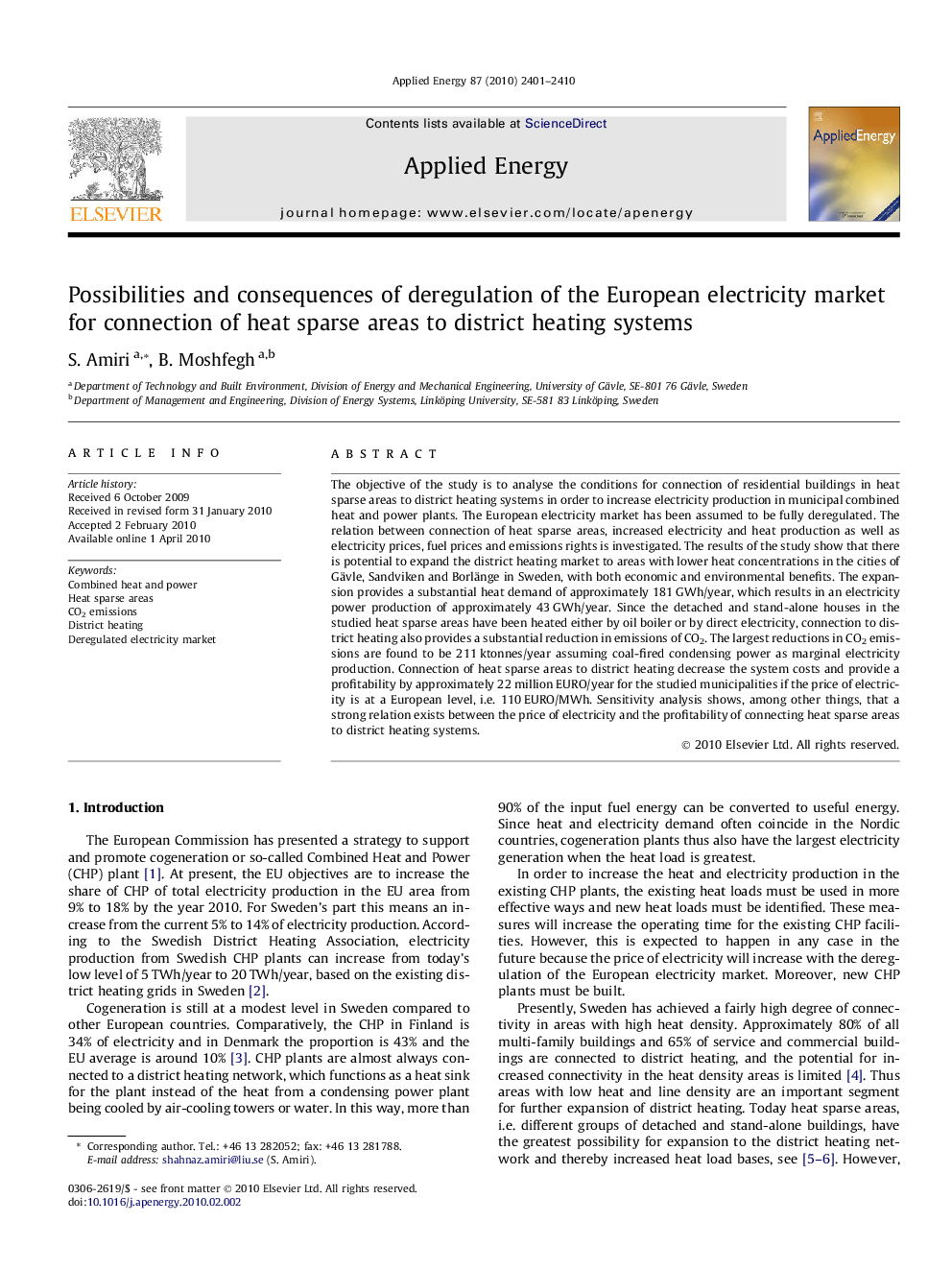| Article ID | Journal | Published Year | Pages | File Type |
|---|---|---|---|---|
| 244812 | Applied Energy | 2010 | 10 Pages |
The objective of the study is to analyse the conditions for connection of residential buildings in heat sparse areas to district heating systems in order to increase electricity production in municipal combined heat and power plants. The European electricity market has been assumed to be fully deregulated. The relation between connection of heat sparse areas, increased electricity and heat production as well as electricity prices, fuel prices and emissions rights is investigated. The results of the study show that there is potential to expand the district heating market to areas with lower heat concentrations in the cities of Gävle, Sandviken and Borlänge in Sweden, with both economic and environmental benefits. The expansion provides a substantial heat demand of approximately 181 GWh/year, which results in an electricity power production of approximately 43 GWh/year. Since the detached and stand-alone houses in the studied heat sparse areas have been heated either by oil boiler or by direct electricity, connection to district heating also provides a substantial reduction in emissions of CO2. The largest reductions in CO2 emissions are found to be 211 ktonnes/year assuming coal-fired condensing power as marginal electricity production. Connection of heat sparse areas to district heating decrease the system costs and provide a profitability by approximately 22 million EURO/year for the studied municipalities if the price of electricity is at a European level, i.e. 110 EURO/MWh. Sensitivity analysis shows, among other things, that a strong relation exists between the price of electricity and the profitability of connecting heat sparse areas to district heating systems.
